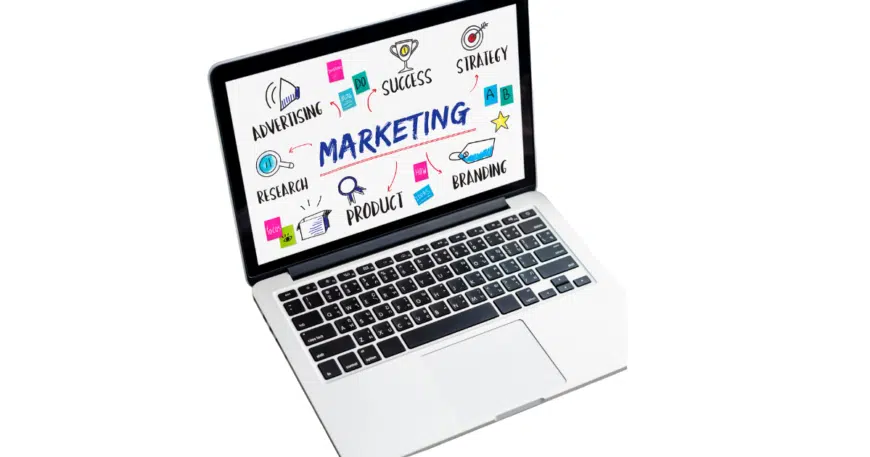How to Build a Digital Marketing Funnel That Actually Works
Digital marketing funnel is a crucial strategy that guides your audience from first discovery to becoming loyal customers. Building a strong digital marketing funnel helps businesses improve lead acquisition, increase conversions, and boost customer loyalty.
This guide will explain the stages of a digital marketing funnel, share strategies to attract, engage, and convert customers, and give real-world examples like Dropbox and HubSpot. By using a well-crafted digital marketing funnel, you can grow your brand successfully.
This guide dives into the anatomy of a digital marketing funnel, detailing how you can use it to attract, engage, and retain customers. We’ll explore each stage of the funnel, highlight strategies you can implement, and include real-world examples like Dropbox, HubSpot, and Neil Patel to inspire you. By the end, you’ll have actionable insight to build a funnel optimized for your brand’s success.
Start building your funnel now and turn leads into lifelong advocates for your business.
What is a Digital Marketing Funnel and Why Do You Need One?
A digital marketing funnel describes the customer’s journey from being unaware of your brand to becoming a loyal advocate. It involves guiding prospects through distinct stages, using targeted strategies to meet their needs at each point along the way.
Why do you need one? Because with the sheer volume of competition online, effective targeting is no longer optional. The funnel helps you tailor every touchpoint, ensuring your message resonates with the right people at the right time. For marketers and business owners, it’s the difference between hoping for conversions and driving them.
Example for inspiration? Consider Dropbox. They attract awareness with their free storage offer, then nurture engagement and conversions by promoting the value of their paid plans. This funnel model has turned Dropbox into a household name in cloud storage.
Awareness Stage – Strategies to Attract Your Target Audience
At the very top of the funnel, your prospects may not even know they have a problem or that your solution exists. The goal at this stage is to grab attention and build awareness of your product or service.
There are several ways to do this:
- Content Marketing: Educational resources such as blogs and videos are effective here. For example, Neil Patel uses free SEO guides and articles to introduce new users to his expertise, driving substantial traffic to his website.
- Search Engine Optimization (SEO): Rank higher in organic search results to increase visibility. Use your primary keywords naturally, just like we’re doing with “digital marketing funnel” throughout this guide.
- Social Media Campaigns: Platforms like Instagram and LinkedIn are perfect for engaging your audience with compelling posts, ads, or stories.
- Paid Ads: Utilize Google Ads or Facebook Ads to target your audience based on demographics, interests, and search behavior.
Make your value proposition clear at this stage. Your audience should instantly understand why they should care about your brand.
Interest Stage – How to Keep Your Audience Engaged
Once you’ve caught someone’s eye, the next step is fostering their interest. At this stage, your audience is looking to learn more, but they’re not yet ready to commit. Strategies that build trust and address pain points are crucial.
Methods to build interest include:
- Lead Magnets: HubSpot excels here, offering free eBooks, templates, and tools to capture leads. By trading valuable resources for contact information, they ensure sustained engagement.
- Email Campaigns: Remember, people who subscribe are already interested. Share insightful newsletters, nurture sequences, or product updates to keep their interest alive.
- Engaging Webinars or Tutorials: An interactive way to showcase your expertise. HubSpot’s webinars, for instance, align perfectly with the questions their potential users ask.
This stage should build confidence and curiosity about your brand. The tone is educational yet persuasive, focusing on nurturing the relationship.
Decision Stage – Tactics to Convert Leads into Customers
At this stage, the lead is ready to make a decision—but it’s up to you to convince them to choose your brand. Your digital marketing funnel should showcase the value your solution offers over the competition while removing potential objections.
Here’s how to do it:
- Case Studies and Testimonials: Highlight real-world success stories. QuickSprout, Neil Patel’s consulting agency, uses client testimonials and case studies to demonstrate their results.
- Exclusive Offers and Discounts: Limited-time discounts or free trials can push hesitant leads toward action. Dropbox’s free trial of premium storage is an example of a tactic that lowers entry barriers.
- Compelling CTAs and Landing Pages: Guide your customers through the next step with intuitive landing pages. Ensure calls to action, such as “Start building your funnel,” are clear and direct.
Provide an experience that’s smooth and frictionless, so your leads can confidently hit that “Buy Now” or “Subscribe” button.
Action Stage – Turning Customers into Brand Advocates
The sale isn’t the end of the story. The action stage is about building loyalty and turning buyers into long-term supporters of your brand. Engaged customers not only make repeat purchases but also spread the word, fueling growth through referrals.
To create brand advocates:
- Personalized Experiences: Tailor recommendations and content to customers’ past interactions. Amazon’s suggested products are a straightforward example.
- Exceptional Customer Support: A seamless support experience ensures satisfaction and repeat business. HubSpot’s support team is often praised for their responsiveness.
- Exclusive Loyalty Programs: Reward customers with points, perks, or early access to products and events. Starbucks perfected this model with their highly successful rewards app.
Your mission is to deepen the connection with your customers beyond the initial transaction, offering continued value and engagement.
Measuring Success and Continuous Optimization
Once your digital marketing funnel is in place, the work isn’t over. Continuous tracking and optimization will ensure your funnel keeps delivering results. Key metrics could include conversion rates, customer lifetime value (CLV), or bounce rates.
Tools like Google Analytics and HubSpot are invaluable for dissecting user behavior and identifying roadblocks in the funnel. Did a particular email campaign underperform? A/B test subject lines and content to find what resonates. Are users dropping off your landing page? Try tweaking the messaging, design, or CTA placement.
Finally, don’t be afraid to innovate. Stay adaptable as trends shift and technology evolves.
Meta Data
Meta title
How to Build a Digital Marketing Funnel That Works
Meta description
Master the art of creating a digital marketing funnel. Increase leads, boost conversions, and grow customer loyalty with our actionable guide.
Take Action Today
By understanding and optimizing each stage of the funnel, from building awareness to turning loyal customers into advocates, you’ll create a marketing engine that delivers measurable results. Whether you’re new to digital marketing or refining your strategy, now is the time to take control.
Start building your funnel now and unlock the potential of your business. Together, let’s turn traffic into customers and customers into champions for your brand.







